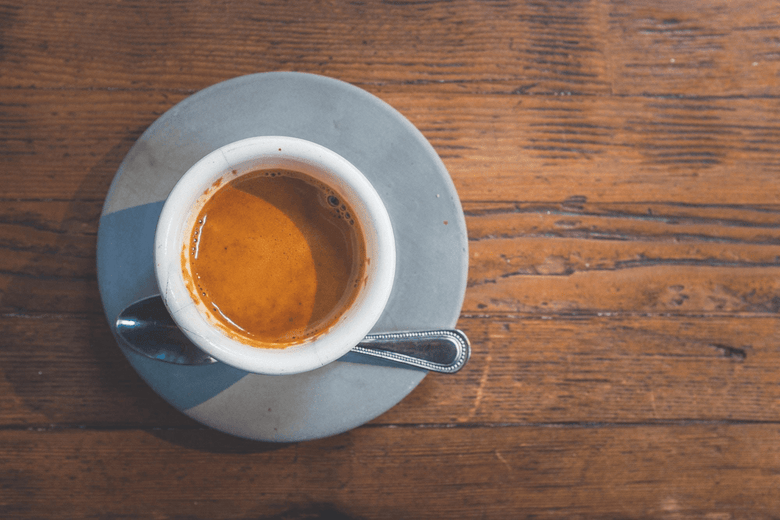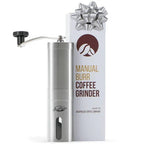Espresso may be the most misunderstood thing in the world of coffee.
I remember walking down the aisle of the grocery store and wondering what made some coffees “espresso” and some not. The fact that I couldn’t decipher what espresso was after walking down the coffee aisle for years is clearly a result of very poor communication.
Somewhere along the line things got confusing. Things were communicated poorly. Our collective understanding of what espresso is and isn’t began to decay. Or maybe we just never really learned in the first place.
No matter how things got this way, they need fixing. Myths need to be busted and misinformation needs to be dispelled.
If you love coffee and want to take your love to the next level by exploring the rich and complicated world of espresso, you’ve come to the right place.
Read: 5 Ways To Up Your Coffee Game
Join me as we look at what espresso is and isn’t, what it tastes like, where espresso came from, and the many ways you can use it.
What Is Espresso? What Is It Not?
Let’s get some misinformation out of the way first. If you’ve believed any of these things, don’t worry. We all have at some point (even the coffee pros).
Espresso is not a coffee bean.
No matter what that bag at the supermarket says, all coffee beans are capable of being espresso beans. All beans labeled “espresso” can also be brewed as regular black coffee.
Coffee bags are labeled this way because most roasters have a signature blend of beans that they roast particularly to thrive when brewed as espresso. It doesn’t mean these beans are any different than non-espresso beans.
Read: The Difference Between Light, Medium, And Dark Roast Coffee
Espresso is not a roasting style.
Most bags of “espresso beans” contain beans that were roasted pretty dark, but, contrary to popular belief, that doesn’t make it an “espresso roast”.
Many roasters choose to roast their espresso blends darker than the rest of their coffees because darker blends tend to brew more consistently than lighter ones. And when you’re working with something as complex and frustrating as espresso, extra consistency is usually appreciated.
And now, let’s talk about what espresso is.
The Specialty Association of America defines espresso as…
“… a 25-35ml (.85-1.2 ounce) beverage prepared from 7-9 grams (14-18 grams for a double) of coffee through which clean water of 195 °-205 °F (92 °-95°C) has been forced at 9-10 atmospheres of pressure, and where the grind of the coffee is such that the brew time is 20-30 seconds.”
Espresso is a brewing process.
It’s not a type of bean. It’s not a roasting style. It’s a way of brewing coffee.

The SCAA definition is pretty specific and narrow. It’s so narrow that many specialty coffee shops pull espresso shots that don’t fit in the definition. I’ve heard of a shop that pulls shots for 60 seconds (2x the SCAA limit). I’ve also heard of a shop that pulls 20g shots in 20 seconds, which is also outside the small SCAA window.
Here’s how I like to describe espresso:
A shot of espresso is a concentrated form of coffee created by forcing hot water through super-fine coffee grounds at 7-10 atmospheres of pressure.
Read: The Ultimate Guide To Espresso
My definition is more functional than precise. It covers the essential basics (concentrated coffee shot, 7-10 atmospheres of pressures), but it isn’t so narrow that it excludes out-of-the-box espresso brewing.
What Does Espresso Taste Like?
Once again, there’s a lot of misinformation out there about what espresso tastes like. I cannot tell you how many times I heard people reject espresso before even trying it because they believed it’s always bitter.
In reality, espresso doesn’t have to be any more bitter than regular black coffee. With fresh beans, reliable equipment, and a skilled barista, espresso can be vibrant, smooth, and satisfying.
Myth: Espresso tastes bitter.
Alright, I’ll admit that a large portion of espresso out there is bitter. However, it’s not because espresso has to be bitter - it’s because so many coffee shops and home brewers use beans that are over roasted and burned.
Read: How To Taste Coffee Bitterness
If you start with poorly sourced and roasted coffee, you’ll get gross espresso. The same is true for any other coffee brewing method. If you brew with fresh, specialty grade beans, you’ll get flavorful espresso
Truth: Great espresso can be fruity, floral, sweet, spicy, and beyond
Just like with any other coffee brewer, espresso can produce incredible coffee. However, you have to keep in mind that espresso has the flavor of a full mug of coffee packed into a small 1-ounce shot.
For many people, that concentration of flavor is so intense that their palates are overwhelmed by the rich flavors. In fact, this is how we all start out. Nobody tastes espresso for the first time and thinks to himself, “Wow. What a smooth shot of espresso”.
Even if the shot is a smooth one, our taste buds are typically too shocked by the intensity to be able to tell at first. Only by drinking espresso several times are your taste buds able to calm down and taste the nuanced flavors.
Well-brewed espresso is ripe with clear flavors. The acidity is strong, yet balanced. A slight bitterness rounds out the acidity and creates low notes. Rich aromas rise from the shot into your nostrils and retro-nasal passages in the back of your throat. If brewed particularly well, a satisfying sweetness pulls the whole shot together.
Read: How To Taste Coffee Sweetness
Learning to taste espresso can be challenging, but the rewards are great. Tasting all the glory a whole mug of coffee can contain in a few concentrated sips is rarely rivaled as far as powerful sensory experiences go.
A Brief Espresso History Lesson
The age of steam powered machinery brought diverse innovation to the 19th century. Almost every industry was impacted - including coffee. The first steam-powered coffee maker appeared in 1884. Essentially, it was a glorified batch brewer, but it paved the way for something else.
Milanese beverage gurus Luigi Bezzerra and Desiderio Pavoni built upon this design and showcased the world’s first single-shot espresso maker at the 1906 World’s Fair in Milan. The machine used only about a fifth of the pressure that modern espresso machines used and created watery, bitter coffee.
Nobody liked it.
Read: 5 Things That Ruin Your Coffee
Over the next 20 years, dozens of new espresso machine styles were released - each failing until the early 30’s when La Marzocco machines started gaining traction around Europe. These machines were the first to really grab long-standing attention.
Fast forward another 80 years. Espresso machines are no longer steam powered. They’re powered by intense pumps, often more than one. They generate 7-10 bars of pressure to pull modern espresso shots.

Sadly, steam powered espresso machines are still sold in big box stores as premium coffee makers. They’re not. Don’t both with those. Trust me.
How Espresso Is Used To Create Drinks
Espresso is so popular around the world largely because of how versatile it is. A black mug of coffee isn’t very adaptable, but espresso shots can be used to create a variety of drinks.
Cappuccinos are 4-6 oz drinks of espresso and velvety steamed milk. Lattes are similar but less intense, using a shot of espresso and 9-15 oz of steamed milk. Shots can be topped with hot water to form an Americano or ice water for an Iced Americano.
Your average specialty coffee shop probably sticks to these classics, but there are also a variety of coffee cocktails and mocktails that you can create using espresso as the coffee ingredient.
---
Espresso is beautiful, complicated, and hardly explored. We’re only just beginning to understand the science behind espresso and innovative developments arrive every year.
If you’d like to explore the incredible world of espresso for yourself, I wish you luck and patience. I’ll also leave you with some advice as an experienced barista: always use freshly roasted and freshly ground coffee beans.
There is no other way to brew incredible espresso.
Happy espresso brewing!


